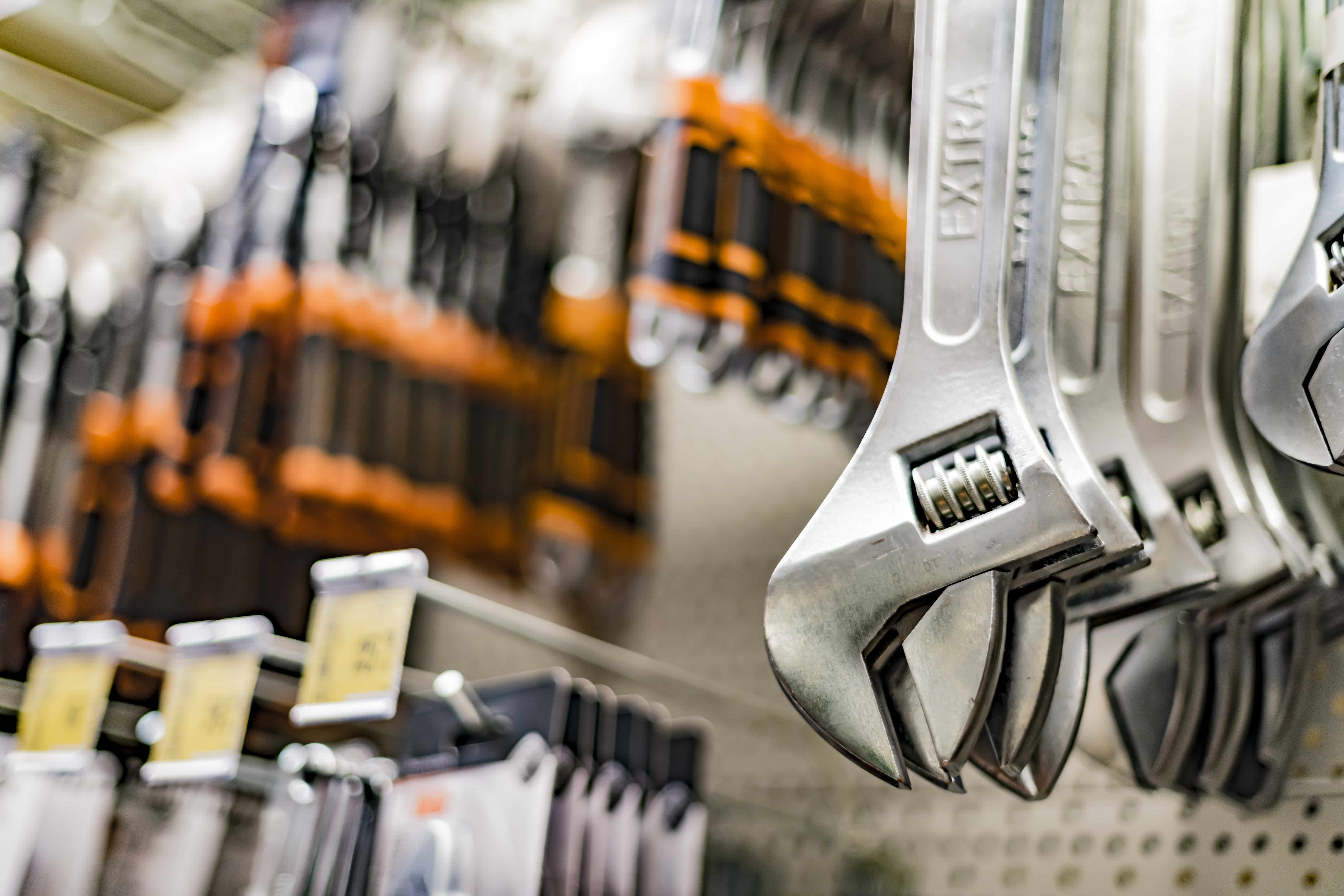In the retail world, line structure refers to the strategy used to organize products by price, brand, size and features. This includes each brand’s assortment of SKUs, as well as how the whole category is arranged on a retailer’s shelves.
Not only can a well-planned line structure help consumers choose a product that best fits their budget - it can actually influence purchasing decisions. Price your products strategically, and you’ll sell in and sell through with less consideration for the competition.
How does line structure work in retail aisles?
While your brand should price each of its SKUs strategically, it’s important to remember that line structure rarely happens in a vacuum. To determine a winning line structure, you must consider your entire category’s price progression.

Imagine a bay of carpenter’s levels. A big box retailer may offer a house brand (A), a mid-priced brand (B) and a premium brand (C). Different retailers will have different strategies for organizing the products in that bay, but if you arranged them by price, you may end up with something like this:
A ($12) > B ($14) > B ($16) > B ($19) > C ($21) > C ($24)
When all brands are considered, this price progression starts with an opening price point (OPP) of $12 for the retailer’s house brand, with additional options that step up to a premium price of $24.
So how do consumers choose a product from this array of options? If you guessed that each step up in price comes with added value, or that shoppers choose the best tool within their budget, you would only be partially correct.
For the full explanation, we need to explore a bit of consumer psychology.

What is the price anchoring effect?
Simply put: price is relative.
Whether they intend to or not, prospective buyers seek out clues from the retail environment and adjust their expectations accordingly. It’s the reason we accept that churros are $6 at Disneyland – and when churros are $6, it makes sense that a bottle of water costs around $4.
Price anchoring establishes the polar ends of the bell curve: your “cheapest-cheap,” and most “premium-premium.” When confronted with a range of choices, a phenomenon called middle option bias takes over. Consumers who aren’t intimately familiar with your product category are more likely to gravitate towards the middle of the price progression.
The reason? Without specialized knowledge, shoppers default to associating price with quality. When choosing a level, the prospective buyer is likely to reason that they want a tool that will last, but they don’t need it to be top-of-the-line.
While it’s true that some consumers will choose the most inexpensive option and others will want the most premium, the main function of the extreme ends of the price progression is to establish a favorable midpoint. As the OPP increases, so does the average spend within that category.

What makes a good line structure?
So how can you take what you know about consumer price receptivity, and determine an optimal line structure? Here are a few key considerations.
1. The right OPP.
The opening price point sets the consumer’s expectations for the entire line. Choose a price that adds perceived value to your middle options.
A winning line structure is focused on dominating the center of the bell curve. Ideally, your midpoint will be as close to the midpoint for your entire category as possible.
2. The right number of products
Your brand exists to provide consumers with a superior alternative within your product category – but giving them too many options can backfire.
Shoppers who get overwhelmed by the number of choices in front of them are likely to leave empty-handed, and those who do make a purchase are less likely to be satisfied with their decision than those who had fewer options. Strike a balance with your line structure and shoppers are more likely to think highly of your product, both at the point of decision and beyond.
3. Effective price anchoring
Price anchoring isn’t just about the extreme ends of your price progression – it also affects sales and promotional offers. If your company sells the mid-priced brand of levels, and you discount your $19 model down to $17, the original price now serves as its own anchor.
It’s important, however, to be strategic. Your goal should be to drive consumers up the price progression by increasing the perceived value of your more premium SKUs.
4. Price receptivity research
How can you dominate the middle if you don’t know where the middle is?
We’ve established that price and value are relative, but that doesn’t mean that an optimal pricing strategy doesn’t exist. The only way to select a meaningful OPP is through consumer research.
Price receptivity indexing uses real consumer data to determine a range of prices that the majority of people will find psychologically acceptable, both for your brand’s product line and your category as a whole.

Before you begin a campaign of trial and error, it’s best practice to invest in relevant research. Understand how you can expect shoppers to respond to your price progression and you can position your products to win their spend in your merchant’s aisles.
